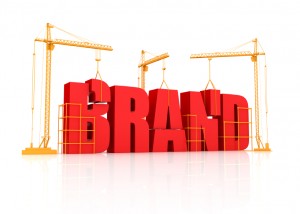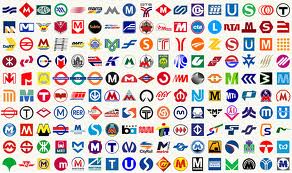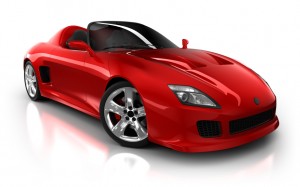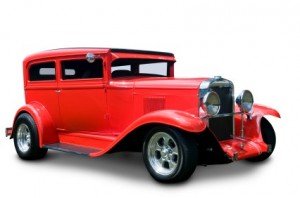Branding: How to Name a Sports Car
You’ve just designed a spectacular, high-performance sports car. It’s beautiful. It handles like a dream. It turns heads. And it’s faster than anything else on the road. Now what do you name it?
Let’s assume that you want to emphasize the car’s speed in the name. Which name sounds faster to you: Tarin or Parin? Think about it for a moment and then read on.
According to researchers at Lexicon, a naming company in California, Tarin implies speed but less luxury. Parin, on the other hand, implies luxury rather than speed. The differences have to do with the pronunciation of the first letter. The initial “t” in Tarin is easy to pronounce — it’s quick like a fast car. The “p” in Parin requires more effort to build — like a luxury car.
“Fine”, you may say, “that works in English but the world is globalizing, so what about other languages?” Funny you should ask. The Lexicon researchers also studied the names in Japanese, Polish, Spanish, and Dutch and got essentially the same result. Pronouncing a “t” is easy and fast regardless of your native language.
This example comes from “Famous Names”, a terrific article by John Colapinto that appeared in The New Yorker. (click here). Unlike the old days, naming has become much more of a science. Linguists are studying how sounds evoke emotions and how those sounds might vary across cultures. Some tidbits from the article:
- Short brand names are better than long ones.
- Pronounceability is important. An unpronounceable name simply puts off prospective buyers. The easiest words to pronounce follow a consonant-vowel-consonant pattern like Amazon or Lipitor or Lexicon.
- Alliteration and assonance help a name sound more likable.
- The letters “c”, “v”, and “p” imply vigor and well-being. This is why the Lexicon researchers love the name of Honda’s Civic.
- The letter “b” is the most “reliable” in virtually any language. Hence the BlackBerry (which Lexicon named).
- The name shouldn’t focus on the product features but rather the story you want to tell about the product.
So here’s a fun game: take these guidelines and start inventing your own names. I often do this when I’m out for a walk. I just play with different letter combinations and, when I come up with something that sounds interesting, I write it down. I now have about 80 names on my “potentially useful” list. Some day, they may come in handy.
Brand Names – Defense
Yesterday, I wrote about playing offense by making brand names memorable, meaningful, and likable. That’s all well and good but how do you defend a good brand name once you’ve created it? As with offense, Kevin Lane Keller and others advise you to consider three variables:
- Transferability — can you use the name for brand or line extensions? Can you transfer it to new categories, including more luxe category or more economical categories? JuicyJuice is a good name for a line of juice drinks but probably doesn’t extend to colas or
 beers. Some names don’t have much meaning in and of themselves but become so closely associated with specific categories that they can’t be extended. Starbucks, for instance, originally could apply to almost anything but now has become closely associated with coffee. Would you buy wine from Starbucks? Similarly,we perceive Volkswagen to be a reliable, economical car. When VW introduced a luxury car, they called it the Volkswagen Phaeton. By all accounts it rivaled cars that cost twice as much. But it didn’t sell well. Great car; wrong brand. By contrast, when Toyota wanted to move up market, they didn’t transfer their own name. Rather they created a new name: Lexus. Similarly, when they moved to the youth market, they created another new name: Scion.
beers. Some names don’t have much meaning in and of themselves but become so closely associated with specific categories that they can’t be extended. Starbucks, for instance, originally could apply to almost anything but now has become closely associated with coffee. Would you buy wine from Starbucks? Similarly,we perceive Volkswagen to be a reliable, economical car. When VW introduced a luxury car, they called it the Volkswagen Phaeton. By all accounts it rivaled cars that cost twice as much. But it didn’t sell well. Great car; wrong brand. By contrast, when Toyota wanted to move up market, they didn’t transfer their own name. Rather they created a new name: Lexus. Similarly, when they moved to the youth market, they created another new name: Scion. - Adaptability — can you update or freshen the name? Will it grow stale? In the early days of the office automation industry, I remember a company named Cassette Powered Typewriters. They literally added memory cassettes to typewriters to make crude word processors. As their technology improved and as typewriters fell out of fashion, the company had to change its name to CPT. Naming after a time period can also create problems. What do we do with Twentieth Century Fox?
- Protectability — can you legally protect the name? Can anyone else copy the name? Perhaps in a different category? Perhaps in a different country?
Here’s where we start to see conflict between offense and defense. An entirely original, invented name is easier to protect. But an invented name usually has no inherent meaning, no emotional associations, and low likability. You have to teach the market what the name means, always an expensive proposition. It may score high on protectability but it’s probably low on memorability, meaningfulness, and likability.
It’s virtually impossible to create a name that scores well on all six criteria. So don’t feel badly if you don’t create a “killer” name after a few brainstorming sessions. If you need to build brand equity, you should probably focus on offense. If you need to maintain brand equity, you should probably focus on defense. Figure out your brand positions and then figure out which variables to focus on. Above all, help your customers imbue the name with emotion. It doesn’t matter what you think. It only matters what they think.
(This article is based largely on Kevin Lane Keller’s book, Strategic Brand Management).
Brand Names: Offense
 My clients often ask me to help them name things. They’re hoping that we can develop a name that plays equally well to logic and emotion and that states a compelling benefit in 15 letters or less. A lot of brains have been damaged this way.
My clients often ask me to help them name things. They’re hoping that we can develop a name that plays equally well to logic and emotion and that states a compelling benefit in 15 letters or less. A lot of brains have been damaged this way.
Great brand names often trigger emotional responses. But we often get the cause and effect backward. The name doesn’t put the emotion in us. We put the emotion in the name.
I worked in college and scraped together enough money to buy a beat-up Pontiac Tempest. The original Pontiac was a great Indian leader in the midwestern United States. The town of Pontiac, Michigan was named after him. General Motors opened a factory there and named the car after the town. Originally, the name Pontiac didn’t mean anything more to me than, say, the name Cotopaxi. It’s just a name. Then I bought the car and enjoyed driving it. Now Pontiac has a special meaning to me, some sentimental value. The name didn’t do anything to me. I did something to the name. That’s why naming is so difficult. The name doesn’t trigger anything until customers add emotion to it.
As Kevin Lane Keller and many other branding experts have pointed out, you can play offense or defense with a name — but it’s hard to do both. Consider three variables for offense:
- Memorability — anything you can do to make your name memorable will help build your brand. This may mean playing off a well-known word — as in Lincoln cars or Winston cigarettes. Be sure to link to something that has positive connotations. Repetition also builds memorability which is why marketers repeat themselves so often.
- Meaningfulness — a good name may identify a product category, or some key product features, or a major product benefit. Be aware that changes in perception may require you to change your name. When fried food came to be viewed as unhealthful, Kentucky Fried Chicken decided to change its name to KFC.
- Likability — it’s hard to know what makes a name likable. You may pick a popular person’s name. Animals often provide better names than people do. It’s hard to hate an animal whereas it’s not so hard to dislike some people. The more abstract a product or service is, the more important it is to focus on a likable name.
Metaphors: What Companies Really Believe
Most companies pay a lot of attention to their formal messages. They’ll work for hours writing and re-writing slogans. They’ll spend days trying to perfect their mission statement. They’ll work hard to get their press release just right.
Metaphors, on the other hand, attract very little formal attention or review. Ask an employee what it’s like to work for a company and they’ll often use metaphors in their response. These metaphors typically are not carefully crafted. They occur naturally, without forethought or guile. Precisely for this reason, they provide an excellent window into what the company really thinks.
If you’re thinking of buying from or working for a company, pay particular attention to the metaphors that employees use. The metaphors will give you insights into the company that you’ll never glean from the formal messages.
If you’re an executive of the company, you also need to pay attention. Your employees may use metaphors that undercut the company’s position. Worse, they may have acquired those metaphors from you. Listen to the metaphors and decide whether you need to change them. If you do, you’ll need some new stories.
Learn more in the video.
Branding: Free The GM Five!
Once upon a time, General Motors had five major brands. Why five? Because there were five decades in the car buying experience. GM had a car for every need and every age.
Back in the day (my Dad’s day), everyone understood how to buy GM brands. Chevrolet was for young couples in their twenties, just starting out in life. In your thirties, you traded up to a Pontiac — a little nicer, not quite so bare bones. Oldsmobile was the choice for forty-somethings — a good middle of the road brand. In your fifties, you opted for a Buick — more luxury, near top-of-the-line. When you reached your sixties (and beyond), you wanted to signal that you had made it — so you bought a Cadillac.
In the late 80s, Tom Wolfe’s Bonfire of the Vanities had a good line comparing a European brand with GM. One of Wolfe’s characters talks about getting rich and buying a Mercedes. Another character responds, “Oh, a Mercedes is just what a Buick used to be.” I recently bought a large Volvo sedan. I like it a lot but I also think, “Oh, it’s just a Swedish Cadillac”.
So, what happened to GM? They stopped building brands and started building cars. Instead of clearly differentiating their brands, they decided to aim for manufacturing efficiency by consolidating platforms, parts, and styling. They may have saved some money on the manufacturing line but they wound up producing indistinguishable cars. Whey would I pay more for a Buick when it looks just like a Chevy? GM reached the nadir with the Cadillac Cimarron — a re-badged Chevy Citation. A GM engineer was asked, “What’s the difference between a Citation and a Cimarron?” He famously replied, “About $5,000”.
What’s the lesson here? Brands belong to buyers, not sellers. GM thought they owned the brands and could treat them to a dose of industrial efficiency. The move made sense from a manufacturing perspective but not from a brand perspective. Once the brands lost their distinction, they also lost their markets.
It’s probably time to review your brands. Don’t review them based on features or functions — that’s the way sellers think. Rather, review your brands based on which markets they appeal to. Are those markets really different from each other? If they are, then keep accentuating the brand differences. If they all appeal to essentially the same market, however, you may want to consolidate your brands. There’s no point keeping five brands around if potential buyers can’t tell them apart.


